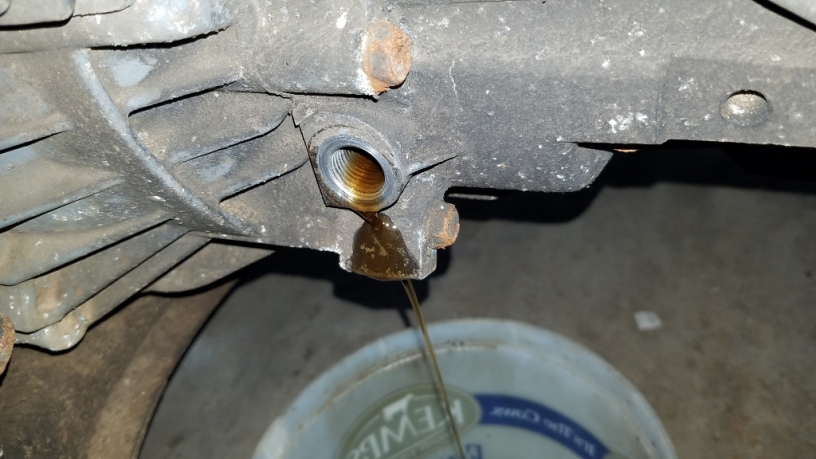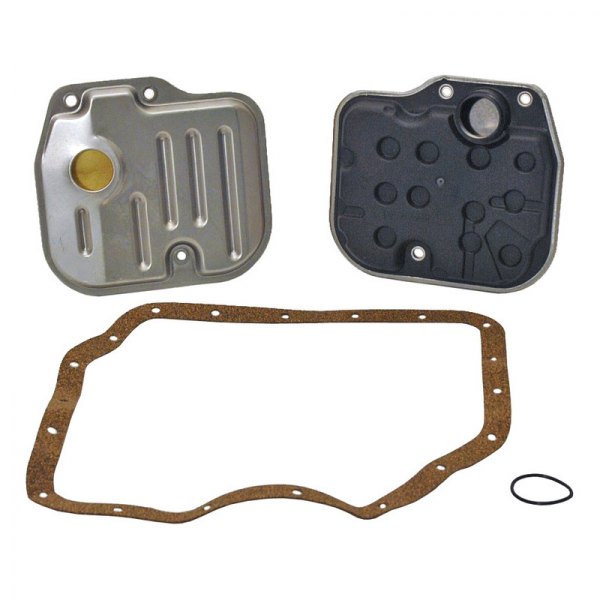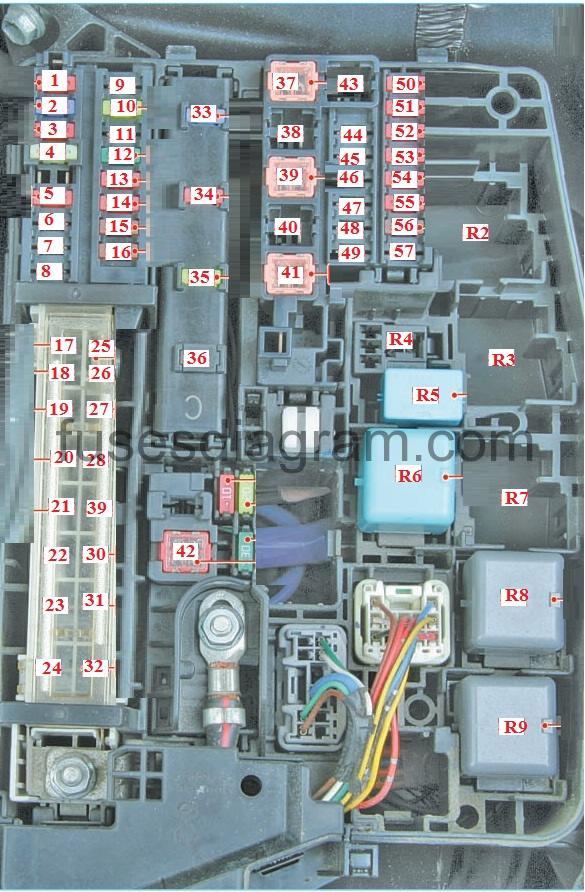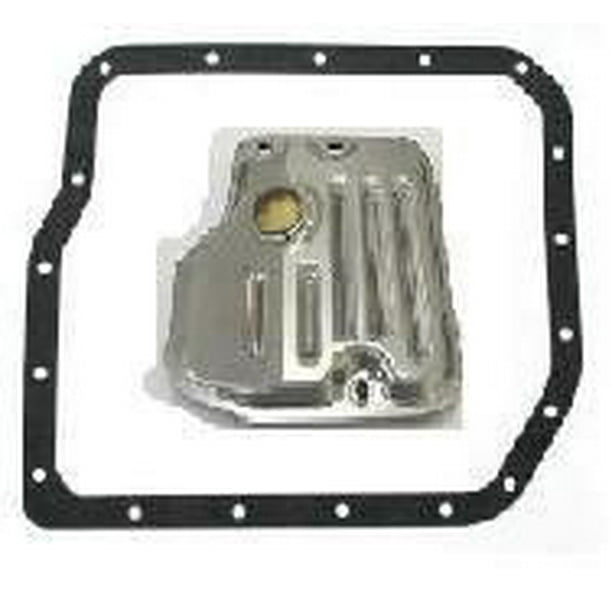- Transmission Failure Problems of Toyota Corolla Toyota Corolla owners have reported 18 problems related to transmission failure (under the power train category). The most recently reported issues are listed below. Also please check out the statistics and reliability analysis of Toyota Corolla based on all problems reported for the Corolla.
- Toyota Corolla Automatic Transmission May Not Shift Correctly at High Mileages - 304 reports. Learn about this problem, why it occurs, and how to fix it.
Toyota Corolla OEM Transmission and Driveline parts will give you both peace of mind and total confidence for all those miles. Genuine Toyota Corolla Transmission and Driveline Parts have been engineered to meet Toyota’s safety, reliability, and functionality standards. Plus, customize the OEM way with Toyota Corolla Accessories. The Corolla had a small recall due to CVT issues. Is long term reliability (200,000 miles) from the Corolla transmission something that I should steer clear of. There are 2 configurations for the new Corolla: L/LE/XLE have the CVT and engine of the previous generation. 1996 Toyota Corolla 1996 Honda Civic DX 1996 Volkswagen Golf GL 1996 Hyundai Elantra GLS Customer Ratings 4.5 out of 5 stars 13 4.0 out of 5 stars 19 Be the first to write a review Be the first to write a review MSRP.
Toyota Corolla Transmission Fluid Change Guide
How to drain and refill the 'ATF' (automatic transmission fluid) in a 9th generation 2003 to 2008 Toyota Corolla sedan.
Main Menu |
2005 Toyota Corolla 1.8L I4 | 1ZZ-FE @ 115,000 Miles | Pull Up Transmission Dipstick |
| This automotive maintenance tutorial was specifically written to assist owners of the ninth generation (2003, 2004, 2005, 2006, 2007 & 2008) Toyota Corolla with the 1.8L I4 engine in performing a simple drain and refill of the automatic transmission fluid or 'ATF'. Owners of other Toyota or related Pontiac vehicles with similar automatic transmissions such as the Matrix, Vibe, Voltz, RAV4, Celica, Camry, Yaris, Tacoma and Avalon may also find these DIY instructions to be helpful. Toyota claims that the ATF fluid should last the 'lifetime' of the vehicle under normal driving conditions. So by doing a quick drain and refill of about 50% of the ATF fluid at least every few years or every 15,000 to 30,000 miles, your car's preventative maintenance will be far ahead of the average Corolla. The items needed to complete this procedure include a 14mm socket with a 3/8' drive ratcheting wrench, a used oil catch container, a gallon jug marked in quarts, an automotive funnel a new crush washer & 4 U.S. quarts of genuine Toyota ATF Type T-IV. Optional items include a floor jack and two jack stands or automotive ramps to raise the vehicle for easier access to the drain plug. | ||
Raise Front of Vehicle | Support With Jack Stands | Gallon Bottle & 4 Quarts ATF |
| This procedure should be done when the engine is warm to help suspend any contaminants within the old transmission fluid and to allow the old fluid to drain out more quickly. If the engine is very hot, allow it to cool a bit to prevent from burning yourself on the underside of the engine bay or when you drain the ATF fluid. The first two steps are to open the hood and then pull up the red plastic handled transmission dipstick an inch or two. The dipstick is located at the front right (driver side) of the engine bay next to the 12V automotive battery and below the air intake hose. Lifting out the transmission dipstick will help prevent a vacuum from forming and allow the old fluid to drain out more quickly. You may be able to reach the transmission fluid drain bolt with out raising the vehicle. I found it easier to lift the front of the car with a floor jack at the jack point under the center of the engine bay. Then securely support the vehicle with the two jack stands. | ||
Jug Marked Half Quart Lines | Transmission Oil Pan | 14mm Drain Bolt |
| Gather together the used oil catch container, a 14mm socket and a 3/8' drive ratcheting wrench. I'd recommend wearing Nitrile rubber gloves to keep your hands clean during the next steps. Used automotive oil may be carcinogenic (cancer causing). Slide under the front driver side of the engine bay and locate the black metal transmission oil pan. The transmission oil drain bolt is located near the rear edge of the pan with the bolt head facing down towards the ground. | ||
Slide Basin Under Drain Bolt | Loosen Counterclockwise | Spin Out Drain Bolt |
| Position the used oil catch basin to just below the drain bolt. Loosen the transmission fluid drain bolt in the counterclockwise direction with the 14mm socket and ratcheting wrench. | ||
Inspect & Replace Washer | Draining Out Old ATF Fluid | Dark Fluid After 115,000 Miles |
| Spin out the drain bolt, clean it and inspect the metal crush washer. The best practice would be to replace the crush washer, but you may be able to re-use the washer if it appears to be in good condition. If the washer appears to be falling apart, use a new one. The part number is Genuine Toyota Gaskets 90430-12031. (These are also the same washers for the 14mm oil drain plug.) Allow the old transmission fluid to drain out for at least a few minutes or until the flow slows to an occasional drip. This is the first time I have 'changed' the transmission fluid on our 2005 Corolla with 115,000 miles on the odometer, so I wasn't surprised that it was a very dark brown or black color with a slightly pungent burnt odor. Fresh ATF fluid is a translucent bright red color and just smells like most other new petroleum based automotive fluids. I bought the new Toyota T-IV ATF fluid at my local Toyota dealership parts counter but I plan on buying it online in the future. | ||
Spin In 14mm Drain Bolt | Tighten Clockwise 13 ft-lbs | Funnel In Measuring Jug |
| Clean off the area around the drain hole with some paper towels or a clean rag. Make sure that the old crush washer is not still attached to the transmission pan. If necessary, attach a new crush washer to the drain bolt. Spin in the drain bolt by hand a few turns in the clockwise direction to prevent it from becoming cross threaded. Tighten the drain bolt in the clockwise direction with the 14mm socket and ratcheting wrench to just past hand tight or about 13 ft-lbs (156 in-lbs) of torque if you have a torque wrench. Double check that the ATF drain bolt is tight before moving on to the next steps. | ||
Pour In Old ATF Fluid | About 3.65 U.S. Quarts | Insert Funnel In Dipstick Hole |
| Insert an automotive funnel in to the gallon jug that you marked with a line every half quart. (To create a measuring jug, just pour in two cups of water from a kitchen measuring cup and mark the level with a permanent marker. Every 2 cups is a half quart and every 4 cups is a quart.) I was able to drain out about 3.65 U.S. quarts of old ATF fluid. That is consistent with what I've read on Toyota forums of other Corolla owners draining out about 3.5 quarts for a drain and refill procedure. (If you would like to clean the metal shavings from the transmission pan magnet and replace the filter, here are a few filter kits with their part numbers: Wix 58040, Beck Arnley 044-0330, Purolator P1296, GKI TF1242 and Toyota 35330-12040. If you raised the vehicle, lower it from the jack stands using the floor jack. | ||
Lower Vehicle From Stands | Pour In New T-IV ATF | Poured In 3 U.S. Quarts |
| Insert a small automotive funnel in to the transmission dipstick hole. The owner's manual for the 2005 Toyota Corolla S states that the automatic transaxle's fluid capacity for a drain and refill is 3.2 U.S. quarts (3.0 Liters or 2.6 Imperial Quarts). Slowly pour in only about 3 to 3.2 U.S. quarts of the new Toyota ATF T-IV in to the transmission fluid dipstick hole. It is far better to have slightly less fluid that necessary in the transmission than to overfill it. | ||
Run Engine - Check Dipstick | ~3.6 U.S. Quarts Added | Check & Replace Dipstick |
| Temporarily replace the transmission dipstick while you perform the following steps to check the transmission fluid level. 1. Turn on the engine. The ATF fluid level should be somewhere between the two notches that indicate the 'HOT' range on the dipstick. If the fluid level is far below the 'HOT' range, turn off the engine and slowly pour in more ATF fluid and repeat the process until the level on the dipstick reaches the correct range. To keep things simple, I just poured in about 3.6 U.S. quarts of new ATF to replace the amount that I had drained and measured with the gallon jug. Luckily, the level on the dipstick was almost in the middle of the 'HOT' range. I'd recommend checking the ATF fluid level again after your next trip. Be sure to record the ATF fluid change in your vehicle's service records. For more, check out my other Corolla DIY tutorials at the links below - 2009-2013 Toyota Corolla Repair & Maintenance Guides | ||
| If you found this guide to be helpful, please consider making a small donation by clicking on the PayPal.com 'Donate' button located to the right of this paragraph. Thank you! (Note: I am not a registered charity. Donations are not tax deductible.) |
Main MenuHomeDigital Cameras |
| Toyota K CVT transmission | |
|---|---|
| Overview | |
| Manufacturer | Aisin |
| Also called | Super CVT-i |
| Production | 2000 - present |
Toyota Motor Corporation's K series of CVTtransmissions found in many Toyota models. They are a pushbelt style of CVT manufactured by Aisin.
K110/K111/K112 series (2000)[edit]

K110[edit]
The K110 was Toyota's first belt-type CVT and production began in August 2000. Toyota said that the transmission was both fuel-efficient and offered high driving performance. The K110 features a torque converter with a long-travel damper to help achieve quiet operation and improved fuel efficiency.
Applications:
- Toyota Opa – 2.0L (2000–2005)
- Toyota Allion, Premio, Wish – 2.0L (2001–2011)
- Toyota Voxy – 2.0L (2007–2011)
- Toyota Auris & Corolla Axio / Fielder
- Toyota Ractis & Sienta
K111[edit]
The K111 transmission is an improved version of K110 introduced in July 2004. The K111 adds neutral-gear control and acceleration linear control.
Applications:
- Toyota Noah, Voxy – 2.0L (2004–2007)
K112[edit]
The K112 transmission, introduced in October 2005, is a modified version of the K111 that is built to work with higher displacement 2.4L engines.
Applications:
- Toyota Alphard – 2.4L (2008–2017)
- Toyota Blade – 2.4L (2006–2011)
- Toyota Estima – 2.4L (2006–2017)
- Toyota Mark X Zio – 2.4L (2007–2011)
- Toyota RAV4 – 2.0/2.4/2.5L (2005–2011)
- Toyota Vanguard – 2.4L (2007–2011)
Toyota Corolla Transmission Prices
K120 'Direct Shift' transmission (2018)[edit]
Toyota brands the K120 as the Direct Shift-CVT and includes a physical first gear (also known as a 'launch gear') and nine additional simulated gears, for a total of 10. The launch gear is engaged when the car takes off from being stopped and transitions to the belt drive once the car picks up speed. The benefit of this system is that traditional CVTs tend to have low efficiency in lower gear ratios (creating a moment of sluggishness when starting from a stop).[1] Since belts are handling a more narrow band of gear ratios, belt angles and loads can be reduced, increasing shift speeds and offering a 6% improvement in fuel efficiency.[2] Production began in October 2018.
Toyota Corolla Transmission Cooler
Applications:
- Toyota Corolla (E210) – 2.0L (2018–present)
- Toyota Camry (XV70) – 2.0L (2019–present)
- Toyota C-HR – 2.0L (2018–present)
- Toyota RAV4 (XA50) – 2.0L (2018–present)
- Toyota Yaris and Yaris Cross (2020-present)

K210 transmission (2002)[edit]
Achieve both high fuel efficiency and high powertrain performance through size and weight reductions and are perfect suited for vehicles in the 1.5- to 1.8-liter class. Production began December 2002. Later in February 2003 Toyota achieves fuel efficiency improvements through its Intelligent Idling Stop System developed by adding an electronic oil pump to the K210 belt-type CVT, ensuring excellent startup performance during engine restarts and producing class-leading fuel efficiency.
Applications:
K310/K311/K312/K313 series (2006)[edit]
Achieve both high fuel efficiency and high powertrain performance through size and weight reductions and are perfect suited for vehicles in the 1.5- to 1.8-liter class. Production began in September 2006.
Current applications:
- Toyota Corolla (K311), Altis – 1.8L (2010–present)
- Toyota Corolla Cross (K311) – 1.8L (2020–present)
- Toyota C-HR (K312) – 1.2L (2017–present)
- Toyota Vios (K312) – 1.5L (2016–present)
- Toyota Yaris (K312) – 1.5L (2016–present)
Previous applications:
- Toyota Auris, Corolla, Rumion – 1.5/1.8L (2006-2011)
- Toyota Allion, Premio – 1.5/1.8L, IST 1.5L (2007-2011)
- Toyota Avensis – 1.8/2.0L (2008-2011)
- Toyota Isis, Verso (K311), Wish – 1.8L (2009-2011)
- Toyota Probox, Succeed – 1.5L (2010-2011)
| Low | O/D | Rev |
|---|---|---|
| 2.386 | 0.411 | 2.505 |
Final drive:
- 5.698:1 (when fitted to 1.5L Allion & Premio 1NZ-FE and 1.8L Corolla 2ZR-FE)
- 5.356:1 (when fitted to 1.8L Allion & Premio 2ZR-FE)
K410/K411/K41 series (2004)[edit]
K411[edit]
Achieves both high fuel efficiency and high powertrain performance through size and weight reductions. Designed for vehicles with engine displacements between 1- and 1.3-liters. Production began December 2004.
Applications:
- Several other models
| Low | O/D | Rev |
|---|---|---|
| 2.4 | 0.43 | 2.505 |
Final drive:

- 5.833:1 (when fitted to 1L 1KR-FE)
- 5.08:1 (when fitted to 1.3L 1NR-FE)
Toyota Corolla Transmission Fluid Change Cost
K41A[edit]
A version of the K410 transmission with the differential shifted forward to maximize space the Toyota iQ, a compact city car that was engineered to maximize passenger space, while minimizing exterior length. Production began October 2008.
Applications:
K41B[edit]

Created by increasing the capacity of the K41A CVT, for 1.3-liter engines. Production began April 2009.
Applications:
K411[edit]
Based on the K410 and adopting a flex-start control mechanism for the first time in a Toyota CVT; Lock-up clutch actively activated during startup to run the engine in the most efficient operating region, thereby improving fuel efficiency. Production began December 2010.
Applications:
- Several models including Corolla, Auris, Vitz, Vios, Yaris, and Echo
See also[edit]
References[edit]
- ^Zatz, David (2018-03-23). 'Toyota's quiet transmission changes'. Retrieved 2020-09-17.
- ^'Direct Shift-CVT: A New Type of Continuously Variable Transmission'. Toyota Motor Corporation Official Global Website (Press release). 2018-02-26. Retrieved 2020-09-17.
Toyota Corolla Cvt Transmission Issues

Toyota Corolla Transmission Fluid
